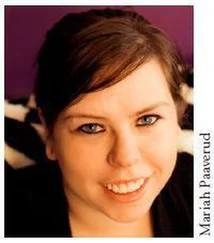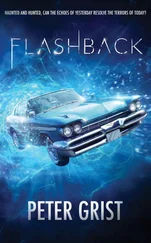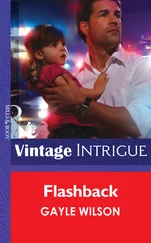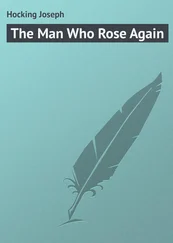Hrafn pushed his thumb into the book and held it to the light of the glove box. He looked at the monochrome photographs of RAF pilots and dapper civilians.
‘At 17:33 GMT, Star Dust radioed to Santiago that their estimated time of arrival was 17:45. It is understood that Star Dust had cleared the Andes and begun its final descent. At 17:41, the aircraft confirmed its ETA of 17:45, but the Morse code transmission was appended with the letters S, T, E, N, D, E, and C. The radio operator at Santiago Tower questioned it, and the letters S, T, E, N, D, E, C were repeated ‘loud and clear but rapid’. That was the last message sent from Star Dust . Some wreckage–’
Hrafn stopped Siggi’s briefing as the floodlit prominence of Walhalla rose above the trees. He waved to the security officer at the gate. The car slewed into the approach road, which had not been cleared since the last snowfall, and stopped on the quiet flatness in front of the building. Hrafn knew he should turn his mind to the meetings and their agendas, the crash and its lines of evidence—but seven letters stubbornly occupied his attention.
S, T, E, N, D, E, C.
He opened the driver’s door so the interior light would help him gather his belongings. As he reached for the PDA, he heard footsteps crunch to a halt behind him. Hrafn turned to the blackness.
‘ Na, und? ’
Two black shapes interrupted the bluish snow. Men. Hrafn stepped from the car and raised his torch. The first man wore designer glasses and a black greatcoat with shoulder-boards of snow. One sleeve was empty, and Hrafn could see the edge of a sling at his collar. The second man was taller and well built.
‘ Guten Morgen, Herr Dr Óskarson. I am Inspector Karel Duczyński with the BKA. I must speak English in deference to my companion. Please don’t be afraid.’
‘Good morning,’ said Hrafn.
‘Hi, I’m Danny Shaw.’
‘Perhaps we could talk inside,’ said the policeman. ‘We’ve driven a long way.’
‘Duczyński, is it? I read about the disturbance at the Fernsehturm . Weren’t you suspended?’
‘Look,’ said Shaw, ‘my sister didn’t board the flight. She travelled down here and she may be in danger. It’s vital that we speak to you.’
‘Your sister?’
Hrafn held the torch on Shaw’s face. He could have both men arrested and let others unpick the threads of their involvement. But the seven letters had not faded from his mind. S, T, E, N, D, E, C. The CVR bus: sabotaged. The landing gear: not deployed. He let his mind travel the curves of a 737-800, felt the forces on its airframe, the cracks of overspeed vibration, and the insistence of a question for its answer.
‘Dr Óskarson,’ said the inspector, ‘I must tell you that an associate of Jem Shaw, Wolfgang Weber, was arrested two days ago with bomb-making instructions in his pocket.’
Hrafn’s tiredness evaporated. ‘What kind?’
The inspector raised a hand. ‘Don’t let me mislead you, sir. I believe that the papers were put on his person by a third party to incriminate him. Further, I believe that the party in question is Saskia Dorfer, a known alias of Saskia Brandt.’
Hrafn knew that any explosion severe enough to threaten a 737 would produce a wreckage footprint kilometres in area. There was, he had to admit, the possibility that a charge could be placed at the confluence of the hydraulic lines that connected the cockpit to the control surfaces. Then a non-compromising explosion could disable the aircraft. A variation of that malfunction had caused the crash at Sioux City in 1989. But, on the heels of this thought, came another: the pilots would retain some basic attitude control through the increase and decrease of engine thrust. And the problem with the radio communications blackout would not be addressed by that hypothesis, unless the saboteur had disabled the radio too. And what about the final transmission, ‘STENDEC’?
‘Mr Óskarson?’
‘You know, blowing up an aircraft, even a large one, by detonating a bomb is easy. I would say trivially easy, given the narrow range of forces the airframe is designed to cope with. But.’
‘But what?’
‘Inspector, my line of work discourages the development of premature hypotheses. If you try enough keys in a lock, you might find one that fits, but it may not be the correct one. Between ourselves, I indulge my imagination a little in that regard. But I can give you two reasons that make me think Saskia Dorfer/Brandt did not blow up that plane with a bomb.’
‘Go on,’ said Mr Shaw. His eyes were fierce. Hrafn began to like him.
‘One, the wreckage pattern tells us that the crash was a C-FIT, or Controlled Flight Into Terrain. The aircraft was in one piece and travelling under power when it crashed.’
‘And the second?’ asked the inspector.
‘The bomber doesn’t usually board the plane.’
Hrafn opened his briefcase and removed the picture of Saskia taken mid-flight. He gave it to the inspector.
‘Is this Brandt?’ he asked. ‘You’re sure?’
‘Alias Dorfer, yes. One of the passengers had a camera. If the date stamp is correct, this was taken four minutes prior to impact.’
Mr Shaw said, ‘You know, there are plenty of bombers willing to give their lives for a cause. The terrorists who flew into the World Trade Centre seemed cool with it.’
‘I have to make decisions based on probabilities, not absolutes. A German woman in her late twenties does not fit the profile of a suicide bomber. Not these days. Besides, she’s carrying a gun in the photograph. That implies that things are, well, complicated.’
‘But whose gun is it?’ asked the inspector. ‘Did the flight have sky marshals on board?’
‘No. Current German transport policy keeps sky marshals on randomly-selected transatlantic flights, not intracontinentals. Now, gentlemen, given the late hour, I must press you. Do you have any information that might help determine the flight’s last moments?’
Again, the inspector and Mr Shaw exchanged a look. Mr Shaw, the taller man, folded his arms. ‘My sister, Jem, has some connection with Saskia Brandt. They were both due to board that flight. My sister–’ Danny faltered. ‘Look, she hasn’t done anything wrong, I promise you. She works in a hairdresser’s.’
Hrafn’s reply was interrupted by the overture to The Marriage of Figaro , which played when Siggi, his assistant, called. As he reached for his phone, he heard the chirrups of two more. Danny Shaw and Inspector Duczyński, each with trepidation, answered their mobiles too. The three men stood in the snow and listened. Their expressions questioned one another.
‘Good morning, gentlemen,’ said a voice in Hrafn’s ear. ‘Call me Mr Self. I’ve taken the precaution of speaking to you simultaneously. I wish to avoid misunderstandings. Now, please listen. We don’t have much time.’
Jem did not pass another car on her journey into the mountains. After half an hour, there were neither city lights to be seen nor moon. She phoned Ego and spoke about the special regard Germans had for their forests. Then she asked it who Saskia really was, expecting it to be reticent. The candour surprised her.
‘Saskia’s identity is a computerised representation stored on a high-density, solid-state device of uncertain origin. It has been surgically inserted at the back of her brain. Everything about her can be attributed to this device. That is, everything you would consider the product of her mind. When you asked Saskia a question, it was the device that replied. When you reached out for her, it was the device that took your hand. The device felt your touch.’
‘That’s weird.’
Читать дальше












